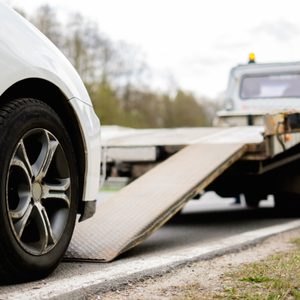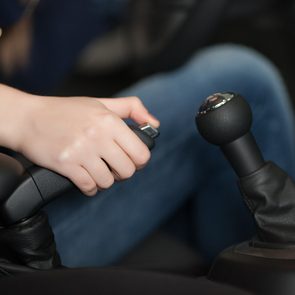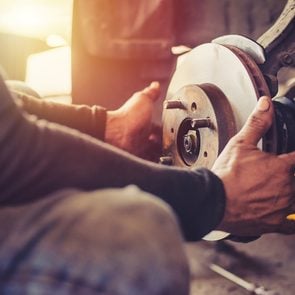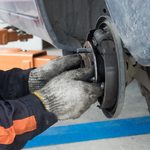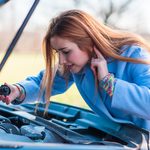Why Are My Brakes Squeaking?
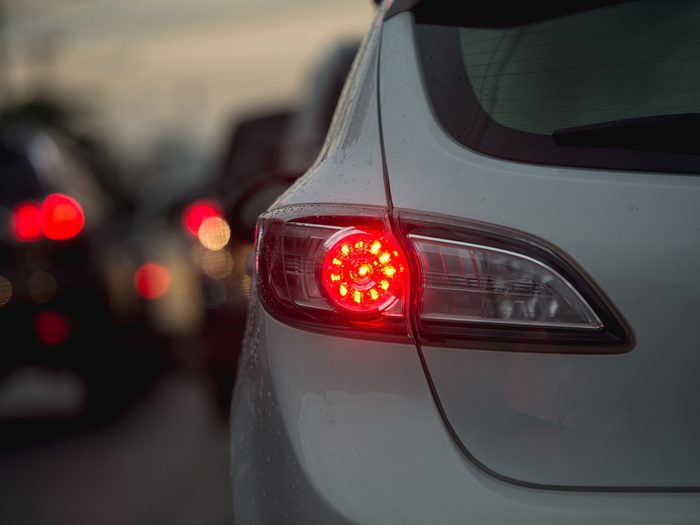
Brake squeal is not uncommon; often caused by worn brake hardware, pads or rotor finish. But are squeaky brakes dangerous or just annoying?
Brakes are your car’s most important safety feature. Made up of several different parts and components, they are designed to be noisy when they’re going bad, which is a good thing. It’s definitely better to find out your brakes are going bad from hearing a squeak than by not being able to stop! Fortunately, most brake noises are considered normal and do not indicate a problem. (Here are nine strange car noises—and what they could mean.)
Constant or strange brake noise can be a sign that your brake hardware simply needs to be lubricated. Or it can be a warning that components in the brake system are wearing out or need to be serviced. So take the common sense approach. Check your brakes if they’re consistently noisy or the noise appears to be increasing. With brakes, it’s always better to be safe than sorry.
How Brakes Work
Brake pads are made of friction material attached to a steel backing plate. When you apply the brakes, fluid pressure forces the brake calipers to clamp the pads down on the disc rotors, creating heat. It is this heat (friction) of the pads pressing against the rotors that slows and stops your car.
Why Are My Brakes Squeaking?
Brakes squeak, squeal or screech when vibrating brake pads produce a sound in a specific frequency. That sound, however, doesn’t mean your brakes are failing. If your brakes grind or grab, or your car pulls to one side when braking, that’s a different story. In those cases ask a mechanic to check your brakes immediately. (Here’s what to do if your car shakes when braking.)
Specific Causes of Brake Noise
Temperature change
- That, or an overnight a light layer of rust can form on a rotor, making brakes squeal. Once brake pads and rotors heat up, the noise stops. Nothing to worry about.
Wear indication
- Some pads come with a wear indicator that produces a loud squeal when the friction material is worn down, indicating the pads need replacing.
- Brake pad friction material can be made from composite materials including semi-metallic, non-asbestos organic [NAO], low-metallic NAO and ceramic.
- Semi-metallic pads have great stopping power, but are noisy and cause premature rotor wear.
- NAOs reduce vibration, but wear quickly.
- Low-metallic NAO also have excellent stopping power, but are noisy and dusty.
- Ceramic pads, the most costly, provide good stopping power, plus are quieter and produce little rust or dust.
Worn, broken or missing brake hardware
- Worn or missing shims, clips, springs or loose fasteners are the main causes of brake noise. Any of those will cause pads to drag on the rotors, overheat, vibrate, and wear unevenly and more quickly.
How to Fix Squeaking Brakes
Replacing brake pads and the hardware causing the squeak can be a DIY job. Many automotive supply stores will lend you specialty tools to replace brake pads. Rotors that are glazed (smooth and shiny) or scored from excessive pad wear and tear, or a brake pedal that pulsates up and down when stopping, all indicate the rotors need to be refinished or replaced.
Do some research to determine if you can replace the rotors yourself. And remember, safety first. Always wear a mask, safety glasses and gloves when replacing brakes.
Pro tips for a successful fix:
- Always replace all brake hardware (anti-rattle and spring clips) when installing new pads. Many applications call for covering the backing plates with anti-squeal lubricant, high-temperature silicone insulation gel or Teflon shims that absorb braking vibration.
- Clean all hardened steel parts (such as caliper slide pins) by soaking them in non-chlorinated brake cleaner (not degreaser) and using a plastic brush. Do not “break” the hardened finish by cleaning with a file or wire brush.
- Be sure to clean all contact points of rust and corrosion and lube all mating parts and slide pins with special brake grease or anti-seize compound.
- Avoid getting lubricants or greases on the pad friction surface.
- When finished, place a pan under the rotors and give them (not the pads) a thorough cleaning with brake cleaner to remove any grease or fingerprints before installing the wheel.
Next, find out what it could mean when your brake light comes on.
